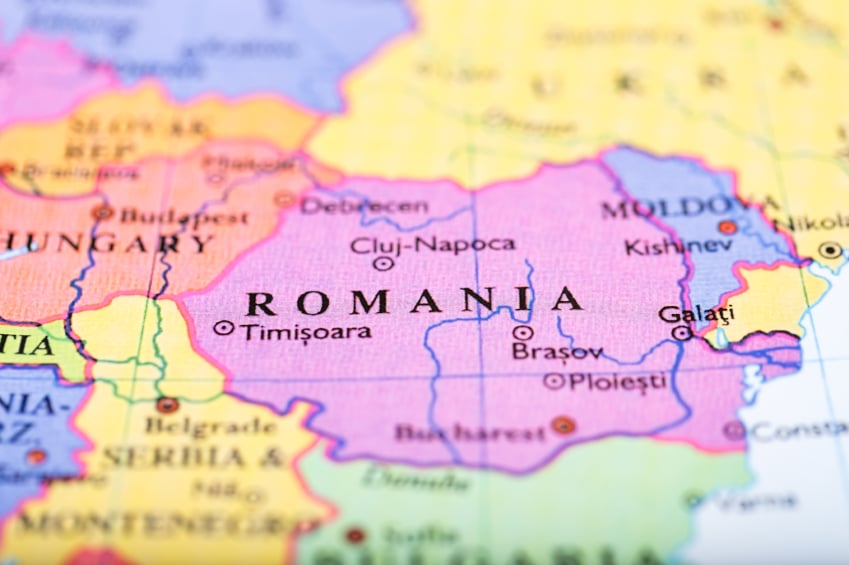
The 10 Easiest Languages to Learn for English Speakers
Looking for a language that’s not going to require three-hour evening classes Monday through Friday for the next 10 years?
So many languages are arguably easier to pick up than others for English speakers.
So if you’re curious about the easiest languages to learn, I’ve got 10 great suggestions to help you out.
Contents
- 1. Dutch
- 2. Danish
- 3. Norwegian
- 4. Swedish
- 5. Spanish
- 6. Italian
- 7. Romanian
- 8. Afrikaans
- 9. Malay and Indonesian
- 10. Esperanto
- And One More Thing...
Download: This blog post is available as a convenient and portable PDF that you can take anywhere. Click here to get a copy. (Download)
1. Dutch
Dutch is practically English’s first cousin. It’s the most closely related to English out of all the languages in this list.
Dutch is full of English cognates—drinken (to drink), kat (cat), week (week), licht (light) and hundreds more.
Once the fundamentals are down, you should be more than ready for basic conversations and children’s books.
2. Danish
Danish is mostly spoken in Denmark, although it’s also a protected minority language in Germany.
The grammar is similar to English, and many vocabulary words will sound familiar, like samme (same), ham (him) and op (up).
As a bonus, if you know Danish, you can read the next two languages—Norwegian and Swedish—pretty easily.
3. Norwegian
If you speak English, you’ll be very comfortable with the grammatical structure of Norwegian, so you can focus on learning vocabulary.
Look at this Norwegian sentence: Jeg spiste egg til frokost (I ate eggs for breakfast).
The Norwegian sentence can be translated word for word in the exact order as it would be said in English.
4. Swedish
Many Swedish native speakers can speak English quite fluently.
This is partly because Swedish and English are Germanic languages, so they have similar sentence structures and even some shared vocabulary.
Swedish has 10 million native speakers, mainly in Sweden but also in Finland.
5. Spanish
Spanish is often the go-to language for English speakers because of its small inventory of speech sounds and user-friendly phonetic spelling system.
In Spanish, a always sounds more or less like a (even with an accent mark), which we as learners appreciate.
Thanks, Spanish.
6. Italian
It’s got a few more vowels than its cousin over in Spain, but Italian’s big advantage is that most of its consonants and vowels are among the most common sounds found in world languages.
That means most learners won’t find many words they can’t get their mouth around!
It’s also an easier language to learn for English speakers than, for example, Russian or Chinese, which take much longer to learn and reach fluency.
7. Romanian
People may not be aware that Romanian is one of the Latin languages because it’s not as popular as the other more commonly learned ones like Spanish and Italian.
Phonetically speaking, once you’ve learned how to pronounce the letters of the alphabet you’re pretty much set when pronouncing words.
Unlike English, there aren’t several pronunciations of a singular letter or letter combination. You say what you see.
8. Afrikaans
We mentioned Dutch above, but Afrikaans is like a grammatically boiled-down version of its parent language.
Whereas Dutch demands verb conjugations like those in English—for instance, I am, you are, it is—Afrikaans doesn’t bother you with the details.
In South Africa it’s ek is (I am), jy is (you are), sy is (she is). What could be easier?
9. Malay and Indonesian
Malay (bahasa melayu) and Indonesian (bahasa indonesia) are similar languages that share a root language and language group but are still different, as they have their own vocabulary, pronunciation, spelling and more.
However, they’re both relatively easy to learn for English speakers.
Malay is spoken in Malaysia and Indonesian in Indonesia. What makes them easy is the grammar—there are no grammatical categories for gender, number or tense.
Since they share roots, they’re mutually intelligible to some extent—some sources say 60-70% in daily conversations.
However, this doesn’t mean learning one language will make you able to speak the other. Instead, think of it more as a head start if you decide to pick up the other one.
10. Esperanto
This language was invented by a few linguists who were also great global citizens.
Even though it’s an “artificial language,” its 2 million speakers, several hundred thousand Wikipedia articles and organizations worldwide would argue that it still counts.
Esperanto was designed with you in mind: Minimal grammar, easy rules and as a bonus, lots of things that resemble many other world languages.
With the languages on this list, you should be able to get started identifying your low-hanging linguistic fruits.
And with the right resources, you can learn these “easy” languages even faster. One way you can do this is with a language learning program such as FluentU.
FluentU takes authentic videos—like music videos, movie trailers, news and inspiring talks—and turns them into personalized language learning lessons.
You can try FluentU for free for 2 weeks. Check out the website or download the iOS app or Android app.
P.S. Click here to take advantage of our current sale! (Expires at the end of this month.)

No matter how busy you are or how difficult you think it may be, there’s a language out there for everyone!
Download: This blog post is available as a convenient and portable PDF that you can take anywhere. Click here to get a copy. (Download)
And One More Thing...
If you dig the idea of learning on your own time from the comfort of your smart device with real-life authentic language content, you'll love using FluentU.
With FluentU, you'll learn real languages—as they're spoken by native speakers. FluentU has a wide variety of videos as you can see here:
FluentU has interactive captions that let you tap on any word to see an image, definition, audio and useful examples. Now native language content is within reach with interactive transcripts.
Didn't catch something? Go back and listen again. Missed a word? Hover your mouse over the subtitles to instantly view definitions.
You can learn all the vocabulary in any video with FluentU's "learn mode." Swipe left or right to see more examples for the word you’re learning.
And FluentU always keeps track of vocabulary that you’re learning. It gives you extra practice with difficult words—and reminds you when it’s time to review what you’ve learned. You get a truly personalized experience.
Start using the FluentU website on your computer or tablet or, better yet, download the FluentU app from the iTunes or Google Play store. Click here to take advantage of our current sale! (Expires at the end of this month.)















